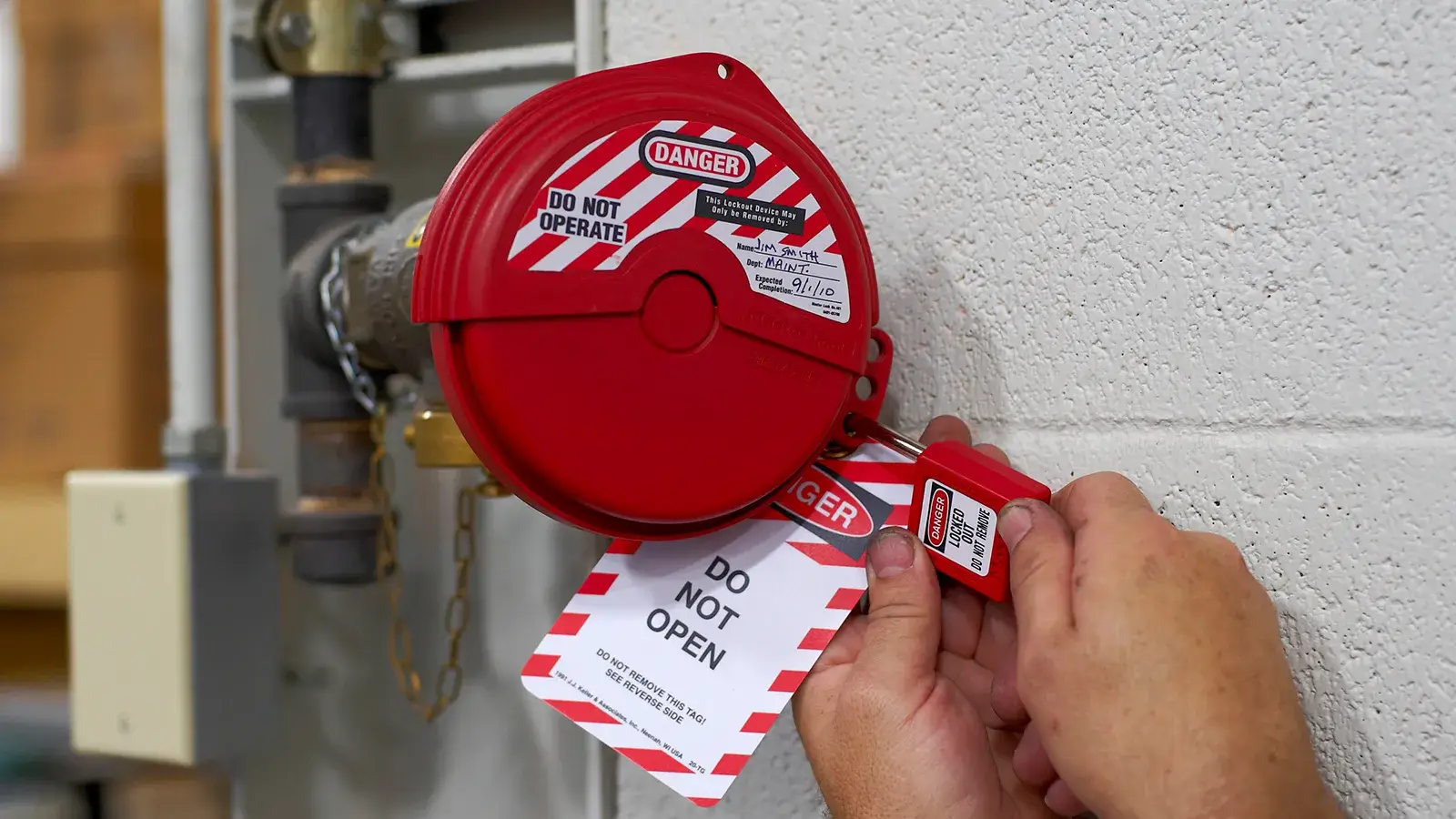When it comes to workplace safety, there’s one thing that should never be taken lightly: hazardous energy. Whether you’re dealing with electrical systems, heavy machinery, or hydraulic equipment, the risk of injury or even death is very real if proper precautions aren’t followed.

This is where Lockout/Tagout (LOTO) comes into play.
What is Lockout/Tagout?
Lockout/Tagout (LOTO) is a safety procedure that’s highly effective at controlling hazardous energy. It ensures equipment is completely de-energized and cannot be started up again before maintenance or repair work is done. It’s designed to protect employees from unexpected energization, which can happen when someone unknowingly powers up a machine while someone else is still working on it.
The “Lockout” part of the procedure involves physically locking the machinery so it can’t be activated, while “Tagout” involves placing a tag on the machinery to warn others not to turn it on. These simple steps can prevent a huge range of accidents. But to do it right, there are certain best practices you’ll want to follow.
Why is LOTO Important?
Let’s be honest, the risks involved in skipping LOTO are too serious to ignore. Thousands of injuries occur each year because machines are powered up unexpectedly during maintenance. We’re talking about electric shocks, crushing injuries, and even amputations in the worst cases. OSHA (Occupational Safety and Health Administration) enforces strict LOTO regulations, and failing to comply could not only result in hefty fines but also devastating consequences for workers.
By implementing LOTO procedures properly, you’re creating a culture of safety where accidents are less likely to happen, and everyone can feel secure in their environment.
Essential LOTO Practices.
While the concept of LOTO seems straightforward, it’s crucial to follow specific guidelines to make sure it’s done correctly. Here are five best practices to help you manage hazardous energy more effectively.
1. Establish Clear Procedures.
Every piece of equipment is different, so a one-size-fits-all approach to LOTO won’t work. You need detailed, written procedures for every machine or system that includes:
- Specific steps to shut down and isolate the machine
- Types of energy involved (electrical, mechanical, hydraulic, etc.)
- Methods to dissipate stored energy
- How to lock out and tag out the equipment safely
Make sure these procedures are readily accessible to all employees, and that they are trained to understand and follow them precisely.
2. Use the Right Lockout Devices.
Not all locks and tags are created equal. Using the wrong equipment could lead to a serious accident. Choose lockout devices that are durable, standardized, and most importantly, fit the specific equipment being locked out. Here’s what to keep in mind:
- Locks should only be used for LOTO, not for any other purposes.
- Each worker must use their own lock.
- Tags should clearly indicate who locked out the machine and why.
Consistency is key. You don’t want any confusion about whether a machine is safe to work on.
3. Verify Zero Energy.
Never assume a machine is safe to work on just because it’s turned off. Before doing any work, it’s essential to verify that all forms of hazardous energy have been isolated and dissipated. This includes:
- Testing the machine to ensure it won’t start up again.
- Checking for residual energy, like stored pressure in a hydraulic system.
- Using test equipment, such as voltage meters, to confirm there’s no electrical energy left in the system.
This step is often overlooked, but it’s crucial in preventing serious accidents.
4. Involve All Affected Employees.
LOTO is not just for maintenance personnel. It’s important that all workers who are affected by the machine’s operation are aware of the LOTO procedures. Before starting maintenance, every employee who may be in the area should know:
- Which equipment is locked out.
- How long the work will take.
- Who is responsible for the lockout.
Involving everyone creates a team-oriented approach to safety. If something goes wrong, multiple eyes are on the situation, increasing the likelihood that an issue will be caught in time.
5. Perform Regular Audits and Training.
Even if you have a solid LOTO program in place, regular audits and refresher training are essential. People get complacent over time, and it’s easy to cut corners or forget crucial steps. By reviewing your LOTO procedures and making sure every employee is up-to-date with their training, you ensure that everyone is maintaining high safety standards.
- Conduct random audits of LOTO procedures.
- Re-train employees annually or when procedures change.
- Review incidents (if any) to identify weak spots in your LOTO process.
Common Mistakes to Avoid.
Even with the best of intentions, mistakes can happen. Here are a few common pitfalls to steer clear of when implementing your LOTO program:
Skipping the lockout process.
Sometimes workers might think they can just tag the equipment without locking it out. This is a big no-no. Tags alone won’t prevent someone from starting the equipment.
Failing to communicate.
If one worker locks out a machine but doesn’t inform others, a miscommunication could lead to disaster. Always keep everyone in the loop.
Not using the proper tools.
As mentioned earlier, using incorrect or makeshift locking devices can be extremely dangerous. Invest in the right tools for the job.
Creating a Safety Culture.
At the end of the day, Lockout/Tagout is all about creating a safety-first environment. When everyone knows their role in the LOTO process and understands the risks of hazardous energy, you drastically reduce the chances of injury or death on the job. It’s not just about following the rules—it’s about keeping people safe, day in and day out. Are you confident that your workplace is properly controlling hazardous energy? Take the time to assess your current LOTO procedures and see where improvements can be made. After all, nothing is more important than making sure everyone goes home safe at the end of the day.
Leave a Reply